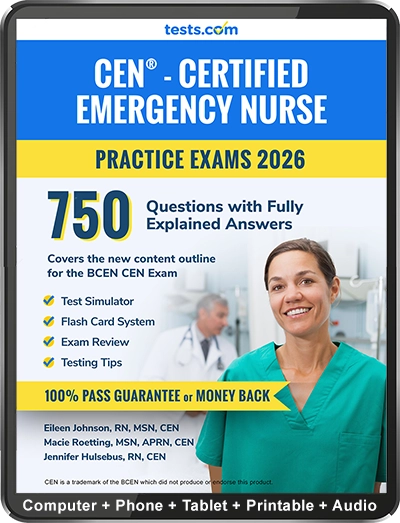2026 Edition
CEN Practice Exam
Study Online Instantly

Click to Save 50% Now
2026 Edition

Try our free CEN Practice Exam to study for your Certified Emergency Nurse certification exam.
A nurse who wishes to obtain the Certified Emergency Nurse (CEN) credential must take and pass the CEN exam which is administered by the Board of Certification of Emergency Nursing (BCEN). The CEN exam is composed of 175 multiple choice questions and you are given three hours to complete the exam.There are twelve areas tested on the CEN exam: Cardiovascular - Respiratory - Neurological - Gastrointestinal - Genitourinary, Gynecological and Obstetrical - Medical Emergencies - Musculoskeletal and Wounds - Maxillofacial and Ocular – Ulcerations and Keratitis - Mental Health - Professinal Issues.
For complete practice, check out the CEN Practice Exam Kit with 750 questions and fully explained answers. It is written by CEN experts and nursing instructors. Our interactive test platform allows you to simulate the exam. Take as many practice tests as you need. There's no time limit or recurring charges.
For more information on the CEN exam and test prep, see our CEN Exam Study Guide.